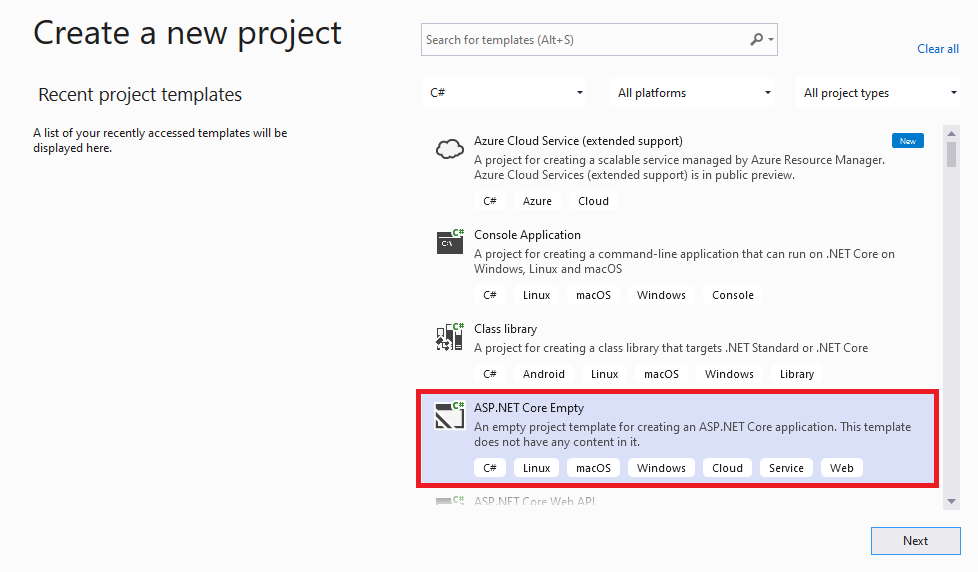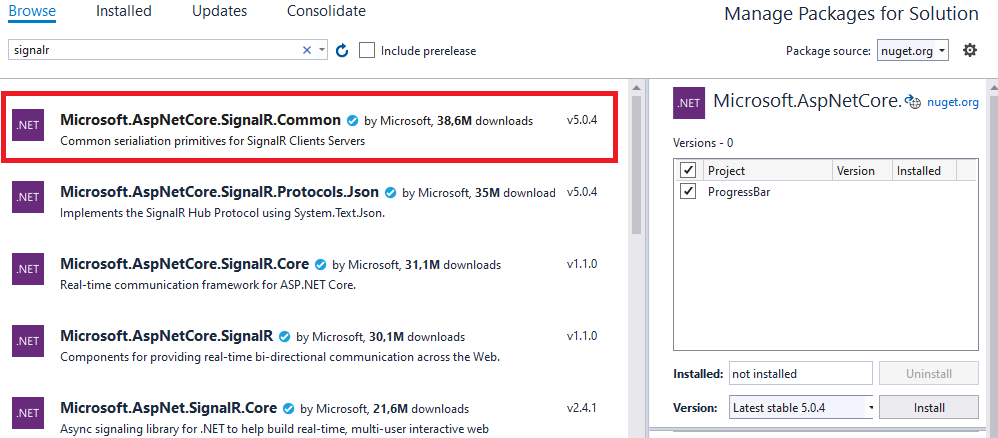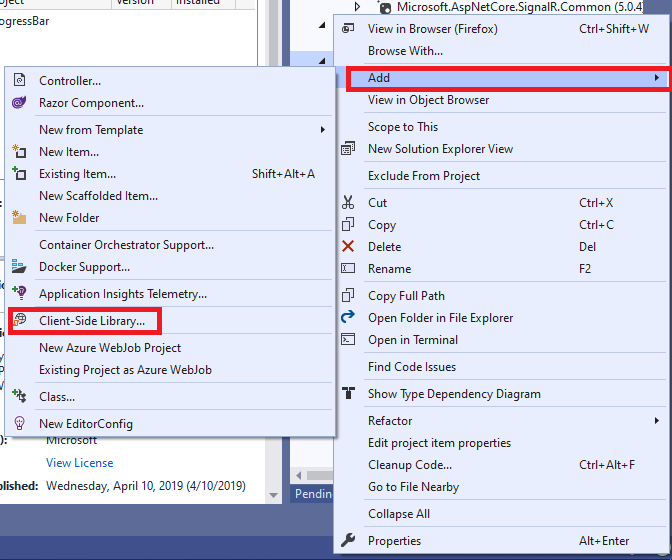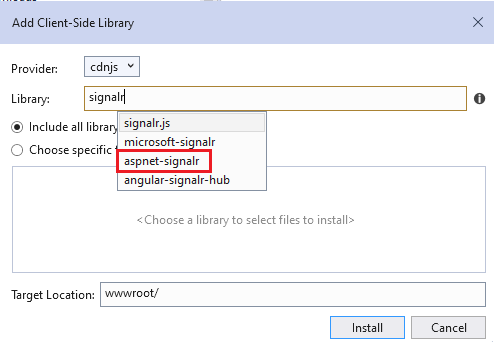- Details
- Written by: Stanko Milosev
- Category: Core
- Hits: 855
 Then in Visual Studio 2022 Build -> Publish -> Import profile I have loaded my profile.
Most probably would also work if simply with FTP upload web.config:
Then in Visual Studio 2022 Build -> Publish -> Import profile I have loaded my profile.
Most probably would also work if simply with FTP upload web.config:
<?xml version="1.0" encoding="utf-8"?>
<configuration>
<location path="." inheritInChildApplications="false">
<system.webServer>
<handlers>
<add name="aspNetCore" path="*" verb="*" modules="AspNetCoreModuleV2" resourceType="Unspecified" />
</handlers>
<aspNetCore processPath="dotnet" arguments=".\CreateAndUpdateKmlWebApi.dll" stdoutLogEnabled="false" stdoutLogFile=".\logs\stdout" hostingModel="inprocess" />
</system.webServer>
</location>
</configuration>
Notice part:
modules="AspNetCoreModuleV2"and
arguments=".\CreateAndUpdateKmlWebApi.dll"At the end, to access Swagger UI go to something like: https://milosevtracking.azurewebsites.net/swagger/index.html
- Details
- Written by: Stanko Milosev
- Category: Core
- Hits: 2150
 Then using nuget I installed Microsoft.AspNetCore.SignalR.Common:
Then using nuget I installed Microsoft.AspNetCore.SignalR.Common:
 I have added new folder "Hubs", where I added new class ProgressHub which is inherited from Hub:
I have added new folder "Hubs", where I added new class ProgressHub which is inherited from Hub:
using System.Threading;
using Microsoft.AspNetCore.SignalR;
namespace SignalRProgressBar.Hubs
{
public class ProgressHub : Hub
{
public string msg = "Initializing and Preparing...";
public int count = 100;
public void CallLongOperation()
{
for (int x = 0; x <= count; x++)
{
// delay the process to see things clearly
Thread.Sleep(100);
if (x == 20)
msg = "Loading Application Settings...";
else if (x == 40)
msg = "Applying Application Settings...";
else if (x == 60)
msg = "Loading User Settings...";
else if (x == 80)
msg = "Applying User Settings...";
else if (x == 100)
msg = "Process Completed!...";
string myMessage = string.Format(msg + " {0}% of {1}%", x, count);
Clients.All.SendAsync("ReceiveMessage", myMessage);
}
}
}
}
In Startup.cs in the method ConfigureServices I added SignalR:
public void ConfigureServices(IServiceCollection services)
{
services.AddSignalR();
}
In EndPoints I added Hub:
app.UseEndpoints(endpoints =>
{
endpoints.MapHub<ProgressHub>("/progressHub");
});
Then I added wwwroot folder, and support for static files as I already explained here
After that I added index.html page in wwwroot folder, and I added Signalr JavaScript using client library:
 As a search I wrote signalR and I have choosen aspnet-signalr:
As a search I wrote signalR and I have choosen aspnet-signalr:
 I have added js library to html
I have added js library to html
<script defer src="aspnet-signalr/signalr.min.js"></script>In folder js I have added my Javascript file, which look like this:
var connection = new signalR.HubConnectionBuilder().withUrl("../progressHub").build();
connection.start().then(function () {
connection.invoke("CallLongOperation").catch(function (err) {
return console.error(err.toString());
});
});
connection.on("ReceiveMessage", function (message) {
document.getElementById('progressbar').value = document.getElementById('progressbar').value + 1;
document.getElementById('progressbarText').innerText = message;
});
My html looks like this:
<!DOCTYPE html>
<html>
<head>
<meta charset="utf-8" />
<title></title>
<script defer src="aspnet-signalr/signalr.min.js"></script>
<script defer src="js/progress.js"></script>
</head>
<body>
<div style="width: 30%; margin: 0 auto;">
<label id="progressbarText" style="font-family: Tahoma; font-size: 0.9em; color: darkgray; margin-top: 230px; padding-bottom: 5px; display:inline-block" for="progressbar">
Initializing and Preparing...
</label>
<br />
<progress id="progressbar" value="1" max="100"></progress>
</div>
</body>
</html>
Notice line in controller:
Clients.All.SendAsync("ReceiveMessage", myMessage);
and line in Javascript:
connection.on("ReceiveMessage", function (message) {
document.getElementById('progressbar').value = document.getElementById('progressbar').value + 1;
document.getElementById('progressbarText').innerText = message;
});
This is how SignalR communicates with client and server using WebSocket. Method name on both sides has to be the same.
Example download from here
- Details
- Written by: Stanko Milosev
- Category: Core
- Hits: 2827
using Microsoft.AspNetCore.Builder;
using Microsoft.AspNetCore.Hosting;
using Microsoft.AspNetCore.Mvc;
using Microsoft.Extensions.DependencyInjection;
using Microsoft.Extensions.Hosting;
namespace Radius
{
public class Startup
{
// This method gets called by the runtime. Use this method to add services to the container.
// For more information on how to configure your application, visit https://go.microsoft.com/fwlink/?LinkID=398940
public void ConfigureServices(IServiceCollection services)
{
services.AddControllers();
}
// This method gets called by the runtime. Use this method to configure the HTTP request pipeline.
public void Configure(IApplicationBuilder app, IWebHostEnvironment env)
{
if (env.IsDevelopment())
{
app.UseDeveloperExceptionPage();
}
app.UseHttpsRedirection();
app.UseDefaultFiles();
app.UseStaticFiles();
app.UseRouting();
app.UseCors();
app.UseEndpoints(endpoints =>
{
endpoints.MapControllers();
});
}
}
}
- Details
- Written by: Stanko Milosev
- Category: Core
- Hits: 2302
<!DOCTYPE html> <head> <meta charset="utf-8" /> <script defer type="text/javascript" src="lib/jquery-3.5.1.js"></script> <script defer type="text/javascript" src="js/index.js"></script> </head> <body> <button id="button" type="button">Click Me!</button> </body>index.js:
$( "#button" ).click(function() {
var json = JSON.stringify({"cities": ["Aurel Vlaicu", "Asquins", "Arnoldstein"]});
$.ajax({
url: "api/Empty/",
type: "POST",
data: json,
dataType: "json",
contentType: "application/json; charset=utf-8",
success: function (data) {
alert("Success.");
}
}).done(function (data) {
try {
json = $.parseJSON( JSON.stringify(data));
} catch (e) {
alert("Error not JSON. " + e.message)
}
}).error(function (xhr, ajaxOptions, thrownError) {
alert("Error.");
}).fail(function (data) {
alert("Sorry. Server unavailable. ");
});
});
.NET side:
[HttpPost]
public ActionResult Get([FromBody] Filter filter)
{
string returnValue = string.Empty;
foreach (var city in filter.cities)
{
returnValue = $"{city}, {returnValue}";
}
return Ok(JsonSerializer.Serialize(returnValue));
}
Notice that in "$.ajax.done" I added try..catch block, and JSON.stringify because of dataType: "json" jQuery will automatically parse string into JSON.
